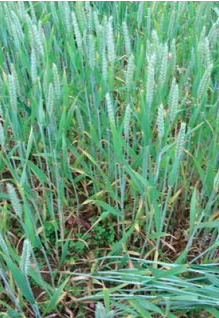The use of inorganic nitrogen is key to maintaining fertility and yield in conventional arable systems. However, inorganic nitrogen is an energy rich product that is becoming increasingly expensive. With the assistance of The John Oldacre Foundation, research within NIAB TAG is exploring the potential of bi-cropped legume species to be integrated into modern conventional farming systems (e.g. clover grown along with wheat as an inter-crop).

This is being carried out with a view to reducing bagged nitrogen requirements and building yield potential and longer-term fertility on thin Cotswold brash soils. One of the key issues is the reliable establishment of both species and the persistency of clover within the system over the length of the rotation. This study is looking at clover established in year one (from timings ranging from August through to mid September) and wheat establishment (timings from mid September through mid October) in both years one and two as well as examining the interaction with applied nitrogen dose. While data from this ongoing research programme has shown variation, there is an increasing suggestion that positive yield responses to clover intercropping are possible at lower nitrogen doses. This may become increasingly relevant as the price of inorganic nitrogen continues to rise.

We will publish more information when it is available.
